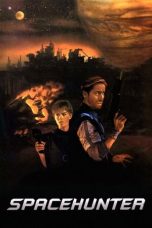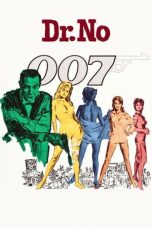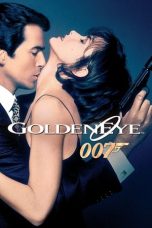- Source: Space art
Space art, also known as astronomical art, is a genre of art that visually depicts the universe through various artistic styles. It may also refer to artworks sent into space.
The development of space art was closely linked to advancements in telescope and imaging technology, which enabled more precise observations of the night sky. Some space artists work directly with scientists to explore new ways to expand the arts, humanities, and cultural expressions relative to space. Space art may communicate ideas about space, often including an artistic interpretation of cosmological phenomena and scientific discoveries.
For many decades, visual artists have explored the topic of space using traditional painting media, followed recently by the use of digital media for the same purpose. Science-fiction magazines and picture essay magazines were some of the first major outlets for space art, often featuring planets, spaceships, and dramatic alien landscapes. Chesley Bonestell, R. A. Smith, Lucien Rudaux, David A. Hardy, and Ludek Pesek were some of the artists actively involved in visualizing topics such as space exploration and colonization in the early days of the genre. Astronomers and experts in rocketry also played roles in inspiring artists in this genre.
NASA’s second administrator, James E. Webb, created the space agency's Space Art program in 1962, four years after its inception. Bonestell's work in this program often depicted various celestial bodies and landscapes, highlighting both the destinations and the imagined technologies used to reach them.
Astronomical art
Astronomical art is a genre of space art that focuses on visual representations of outer space. It encompasses various themes, including the space environment as a new frontier for humanity, depictions of alien worlds, representations of extreme phenomena like black holes, and artistic concepts inspired by astronomy.
Astronomical art emerged as a distinct genre in the 1940s and 1950s. Chesley Bonestell was recognized for his skills in addressing perspective challenges and creating visual representations of astronomical concepts. Contemporary artists continue to contribute to the visualization of ideas within the space community, such as depicting theoretical capabilities for interstellar travel and illustrating hypothetical deep-space phenomena.
Astronomical art is the most recent of several art movements that have explored ideas emerging from the ongoing exploration of Earth. Finding its roots in genres such as the Hudson River School or Luminism, most astronomical artists use traditional painting methods or digital equivalents in a way that brings the viewer to the frontiers of human knowledge gathered in the exploration of space. Such works usually portray things in the visual language of realism extrapolated to exotic environments, whose details reflect ongoing knowledge and educated guesswork. An example of the process of creating astronomical art would be studying and visiting desert environments to experience something of what it might be like on Mars and painting based on such experiences. Another would be to hear of an astronomical concept, and then seek out published articles or experts in the field. Usually, there is an artistic effort to emphasize the favourable visual elements, just as a photographer composes a picture. Notable astronomical art often reflects the artist's interpretation and imagination regarding the subject portrayed.
Science fiction magazines such as Fantasy and Science Fiction, Amazing, Astounding (later renamed Analog), and Galaxy were platforms for space and astronomical art in the 1950s. Picture essay magazines of the time, such as Life, Collier's, and Coronet, were other major outlets for such art. Today, astronomical art can be seen in magazines such as Sky and Telescope, The Planetary Report, and occasionally in Scientific American. The NASA fine arts program has been an ongoing effort to hire artists to create works generally specific to a particular space project. The program documents historical events in recognizable form for professional artists. The NASA Fine Arts Program operated in an era of forward progress under its first head director, James Dean. Even then, pictorial realism seemed a subset rather than a dominant visual influence.
The works that document space flight situations, such as those referenced above, are similar in concept to government efforts during World War II to send artists to battle zones for documentation. Much of which appeared in contemporary Life magazines. Most of today's widely published space and astronomical artists have belonged to the International Association of Astronomical Artists since 1983.
Photography
The first photographs of the entire Earth by satellites and crewed Apollo missions brought a new sense of Earth and promoted ideas of the unity of humanity. Photographs taken by explorers on the Moon evoked the experience of being in another world. The Pillars of Creation taken by the Hubble Space Telescope and other Hubble photos often evoke intense responses from viewers; for example, Hubble's planetary nebula images.
Artistry
Artists have experienced free-fall conditions during flights flown with NASA, the Russian and French Space Agencies, and the Zero Gravity Arts Consortium. Early efforts by artists to have art pieces placed in space have already been accomplished with painting, holography, micro-gravity mobiles, floating literary works, and sculpture.
History
Early examples of space art are depictions of celestial bodies in ancient artifacts. The 'Land Grant to Ḫunnubat-Nanaya Kudurru,' a Babylonian limestone artifact from the 12th century BC, features early representations of Venus, the lunar crescent, and the solar disk.
Albrecht Altdorfer's painting The Battle of Issus (1529) shows the curvature of the Earth from a great height. Galileo's sketches of the Moon from the Sidereus Nuncius (1610) were published among other early descriptions of the Moon's topography. In 1711, Donato Creti painted a series of astronomers viewing other planets of the Solar System through a telescope to interest the Vatican in establishing an astronomical observatory.
= 19th century
=In the early 1870s-1900s, Étienne Léopold Trouvelot published a series of Chromolithographs of his pastels of astronomical subjects.
In 1874, James Carpenter and James Nasmyth's work The Moon: Considered as a Planet, a World, and a Satellite included photographs of sculpted models of Lunar features, in the marked vertical exaggeration of the actual relief of the Moon.
In 1877, Paul Dominique Philippoteaux and engraver Laplante illustrated Jules Verne's story Off on a Comet, including an imaginative view looking up at the rings of Saturn from the planet itself.
= 20th century
=In 1918, Howard Russell Butler deliberately made use of the dynamic range of human vision in painting a total eclipse based on direct observation.
In 1927, Scriven Bolten created lunar landscape images for the Illustrated London News using painted photos of plaster models.
In 1937, Lucien Rudaux painted many works for Sur Les Autres Mondes.
In 1944, Chesley Bonestell's paintings of Saturn seen from its different moons appeared in Life magazine, introducing astronomical art to a wide American audience. Books featuring Bonestell's art include The Conquest Of Space (1949), The Exploration Of Mars (1956), and Life's The World We Live In (1955).
The second Hayden Planetarium Symposium on Space Travel, held in New York in October 1952, resulted in a series of widely read space flight articles in Collier's magazine, illustrated by Bonestell and others.
In 1963, Ludek Pesek's paintings filled the large volumes of The Moon And the Planets, and the 1968 volume Our Planet Earth-From The Beginning.
The 1980 Cosmos PBS television show and book used the work of many space artists. Host Carl Sagan used such art in several of his books.
The 21st century expanded to sending art into space.
Art in space
= First art created in space
=The first active artist in space was Alexei Leonov, who produced the first drawing in space onboard Voskhod 2 in 1965, depicting an orbital sunrise.
= The first original oil paintings flown into outer space
=An art conservation experiment from Vertical Horizons, founded by Howard Wishnow and Ellery Kurtz, was flown aboard the Space Shuttle Columbia STS-61-C on January 12, 1986. Four original oil paintings by American artist Ellery Kurtz were flown in one of NASA's GetAway Special (G.A.S.) containers mounted to a bridge in the shuttle cargo bay. These original works of art are the first oil paintings to enter Earth's orbit. This NASA GAS canister, designated G-481, was the 46th such canister flown aboard a Space Shuttle. The Space Shuttle Columbia orbited the Earth 98 times during its mission duration of 6 days, 2 hours, 3 minutes, and 51 seconds. Columbia was launched from Kennedy Space Center, Cape Canaveral, Florida, on January 12, 1986, and landed at the Kennedy Space Center on January 18, 1986.
= Zero-G space art
=Small art objects have been carried on several Apollo missions, such as gold emblems and a small Fallen Astronaut figurine that was left on the Moon during the 1971 Apollo 15 mission. Visual observations have been recorded in drawings and commentary by earlier cosmonauts and astronauts of difficult-to-photograph phenomena such as the airglow, twilight colors, and outer details of the solar corona.
Another work, later brought to Earth orbit sometime in the mid-80s, was a study of the golden sunlight on a Soviet space station by Russian artist Andrei Sokolov, carried aboard the Soviet Mir space station starting with modules in February 1986. In 1984, Joseph McShane and Lowry Burgess had their conceptual artwork flown aboard the Space Shuttle utilizing NASA's 'Get Away Special' program. The first sculpture specifically designed for human habitat in orbit was Arthur Woods' Cosmic Dancer which was sent to the Mir station in 1993. In 1995, Arthur Woods organized Ars ad Astra, the first art exhibition in Earth orbit. consisting of 20 original artworks from 20 artists and an electronic archive also took place on the Mir space station as part of ESA's EUROMIR'95 mission. In 1998, Frank Pietronigro flew Research Project Number 33: Investigating the Creative Process in a Micro-gravity Environment, where he created 'drift paintings' and danced in microgravity space. In 2006, the artist returned to micro-gravity flight to create three new works, one in collaboration with Lowry Burgess; Moments in the Infinite Absolute, Flags in Space!, and a new form of microgravity mobile.
The Slovenian theater director Dragan Živadinov staged a performance called Noordung Zero Gravity Biomechanical during a parabolic flight organized through the Yuri Gagarin Cosmonaut Training Center facility in Star City in 1999. The UK arts group The Arts Catalyst, with the MIR consortium (Arts Catalyst, Projekt Atol, V2 Organisation, Leonardo-Olats), organized a series of parabolic 'zero gravity' flights for artistic and cultural experimentation with the Gagarin Cosmonaut Training Centre, as well as with the European Space Agency, between 2000 and 2004, including Investigations in Microgravity, MIR Flight 001, and MIR Campaign 2003. Artists who participated in these flights and visits to Russia and ESA have included the Otolith Group, shortlisted in 2011 for the Turner Prize, Stefan Gec, Ansuman Biswas and Jem Finer, Kitsou Dubois, Yuri Leiderman, and Marcel·li Antunez Roca.
Richard Garriott visited the International Space Station, via the Soyuz TMA-13 on October 12, 2008, where he displayed an art exhibition, Celestial Matters, during his 12 days in orbit. Celestial Matters included works by ten American artists as well as work Garriott created himself while in orbit, honoring his heritage in art and science. The art was later exhibited at the Charles Bank Gallery in New York City in October 2011. Garriott also exhibited Astrogeneris Mementos, two small works, somewhat reminiscent of memento mori or hairwork, containing locks of hair from Richard Garriott and Owen Garriott sealed in chambers by Steve Brudniak, the first assemblage sculptures exhibited in outer space.
In 2009, NASA astronaut Nicole Stott having brought watercolor paint and watercolor paper with her for the long-duration Expedition 21 mission to the International Space Station became the first astronaut to paint in space.
The Mexican artist and musician Nahum directed the art and science project Matters of Gravity (La Gravedad de los Asuntos in Spanish), a project reflecting on gravity in its absence. The first mission consisting only of Latin American artists was executed in a zero-gravity flight at the Yuri Gagarin Cosmonaut Training Center in 2014. The participating artists include Tania Candiani, Ale de la Puente, Ivan Puig, Arcángelo Constantini, Fabiola Torres-Alzaga, Gilberto Esparza, Juan Jose Diaz Infante, Nahum, and Marcela Armas. The project included the participation of Mexican scientist Miguel Alcubierre and curators Rob La Frenais and Kerry Anne Doyle.
Performance art has also occurred in space, as with Chris Hadfield's 2013, edited performance of David Bowie's 1969 song "Space Oddity and Thomas Pesquet's 2017 edited performance of "L'Art de la joie par les Spacelatorz" ."
= Sojourner 2020 project onboard the International Space Station
=In the Sojourner 2020 project from MIT, the Space Exploration Initiative took nine selected artists to develop art projects on board the International Space Station. Sojourner 2020 was a 1.5U size device (100mm x 100mm x 152.4mm) that was launched into low Earth orbit between March 7 and April 7 during the COVID-19 pandemic. It featured a three-layer telescoping structure that simulated three different "gravities": zero gravity, lunar gravity, and Martian gravity. Each layer of the structure rotated independently. The top layer remained still in weightlessness, while the middle and bottom layers spun at different speeds to produce centripetal accelerations that mimicked lunar gravity and Martian gravity respectively. Each layer carried six pockets that held the projects. Each pocket was a container with a diameter of 10 mm and a depth of 12 mm. The artist proposed and accomplished artworks in a variety of different mediums, including carved stone sculptures by Erin Genia, liquid pigment experiments by Andrea Ling and Levi Cai, sculptures made of transgender hormone replacement medicines by Adriana Knouf, and living organisms, like marine diatoms of the genus Phaeodactylum Tricornutum, by Luis Guzmán.
The nine artist groups selected onboard Sojourner 2020 were:
Luis Bernardo Guzmán - bio architectures (Cosmo biology) - Chile
Xin Liu, Lucia Monge - Unearthing the Futures - China and Peru
Levi Cai & Andrea Ling - Abiogenetic Triptych - USA, Canada
Kat Kohl - Memory Chain: A Pas de Deux of Artifact - USA
Henry Tan - Pearl of Lunar - Thai
Janet Biggs - Finding Equilibrium - USA
Masahito Ono - Nothing, Something, Everything - Japan
Adriana Knouf - TX-1 - USA
Erin Genia - Canupa Inyan: Falling Star Woman - American Sisseton Wahpeton Oyate
= Artworks launched into outer space
=The Golden Record: Greetings and Sounds of the Earth
The Contour of Presence by Nahum
Orbital Reflector by Trevor Paglen
Enoch by Tavares Strachan
Moon Gallery by the Moon Gallery Foundation
Echoes From the Valley of Existence by Amy Karle
Humans have engaged in many cultural activities in space, particularly on space stations, recontextualizing terrestrial culture and art.
See also
Futurism
List of space artists
List of space art-related books
Russian cosmism
Science-fiction
Space Advocacy
Time capsule
References
Further reading
Space Art, Ron Miller, Starlog Magazine
Visions of Space, David A. Hardy, Paper Tiger 1989
Worlds Beyond: The Art of Chesley Bonestell, Ron Miller & Frederick C. Durant, III
Star Struck: One Thousand Years of the art of Science and Astronomy, Ronald Brashear & Daniel Lewis, 2001 Univ. of Washington Press
Futures: 50 Years in Space, David A. Hardy & Patrick Moore, AAPPL 2004
Out of the Cradle: Exploring the Frontiers beyond Earth, William K. Hartmann, Ron Miller and Pamela Lee (Workman Publishing, 1984)
Space Art: How to Draw and Paint Planets, Moons, and Landscapes of Alien Worlds, Michael Carroll, 2007 Watson Guptill/Random House
The Impact of American and Russian Cosmism on the Representation of Space Exploration in 20th Century American and Soviet Space Art, Kornelia Boczkowska, Wydawnictwo Naukowe UAM, 2016
External links
International Association of Astronomical Artists
numerous space art site links
Kata Kunci Pencarian:
- Sangkring Art Space
- North Art Space
- Tujuh Bintang Art Space
- Elon Musk
- Bird in Space
- Art Jog
- Museum Seni Modern
- Chesley Bonestell
- Art Bell
- Zeke Khaseli
- Space art
- Space Art (band)
- Elements of art
- Public art
- Installation art
- List of largest art museums
- Art exhibition
- List of art media
- Artist collective
- Art museum
- 1
- 2
Dr. No (1962)
Aliens (1986)
No More Posts Available.
No more pages to load.














